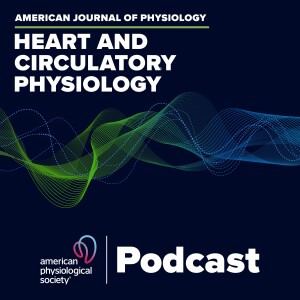
How do the 3 Rs of Research – Refinement, Reduction, Replacement – factor into a methodological paper regarding a novel quantitative method for using an electrocardiogram to determine which animals have infarcts that reflect successful coronary ligation? Listen as Consulting Editor Dr. Ganesh Halade (University of South Florida) interviews lead author and Consulting Editor Dr. Kristine DeLeon-Pennell (Medical University of South Carolina) and content expert Dr. Corey Reynolds (Merck & Co.) about the recent work by Broughton et al. What started as an internal project to improve The DeLeon-Pennell Lab’s surgical success grew into a research article published as part of a Call for Papers on Innovation in Improving Rigor and Reproducibility in Cardiovascular Research. The DeLeon-Pennell Lab was interested in streamlining infarct size between lab members, students, and technicians during the surgical procedures used for their mouse studies. Aiming for a threshold of 35% infarct size, the DeLeon-Pennell Lab wanted to move beyond looking only at the elevation of the T wave to confirm infarct size. To do so, Broughton et al. designed a new ECG method that provides real-time feedback during the procedure. Broughton et al. found that area under the QRS curve is stronger for predicting successful MI surgeries with an infarct size greater than 35%. This new method will ultimately allow researchers to reduce the time spent performing surgical experiments and the overall number of animals used. Listen now to find out more.
Philip Broughton, Miguel Troncoso, Alexa Corker, Alexus Williams, Dawson Bolus, Gualberto Munoz, Caroline McWhorter, Hallie Roerden, Penny Huebsch, and Kristine Y. DeLeon-Pennell Riding the wave: a quantitative report of electrocardiogram utilization for myocardial infarction confirmation Am J Physiol Heart Circ Physiol, published August 3, 2022. DOI: doi.org/10.1152/ajpheart.00201.2022
More Episodes
 2021-08-06
2021-08-06
 387
387
 2021-07-16
2021-07-16
 414
414
 2021-06-18
2021-06-18
 467
467
 2021-06-07
2021-06-07
 772
772
 2021-05-14
2021-05-14
 383
383
 2021-05-10
2021-05-10
 386
386
 2021-05-06
2021-05-06
 351
351
 2021-04-26
2021-04-26
 337
337
 2021-04-06
2021-04-06
 384
384
 2021-03-24
2021-03-24
 361
361
 2021-03-16
2021-03-16
 373
373
 2021-02-04
2021-02-04
 553
553
 2021-01-22
2021-01-22
 372
372
 2021-01-11
2021-01-11
 396
396
 2020-12-11
2020-12-11
 526
526
 2020-12-04
2020-12-04
 300
300
 2020-11-20
2020-11-20
 282
282
 2020-10-23
2020-10-23
 345
345
Create your
podcast in
minutes
- Full-featured podcast site
- Unlimited storage and bandwidth
- Comprehensive podcast stats
- Distribute to Apple Podcasts, Spotify, and more
- Make money with your podcast
It is Free
- Privacy Policy
- Cookie Policy
- Terms of Use
- Consent Preferences
- Copyright © 2015-2024 Podbean.com





